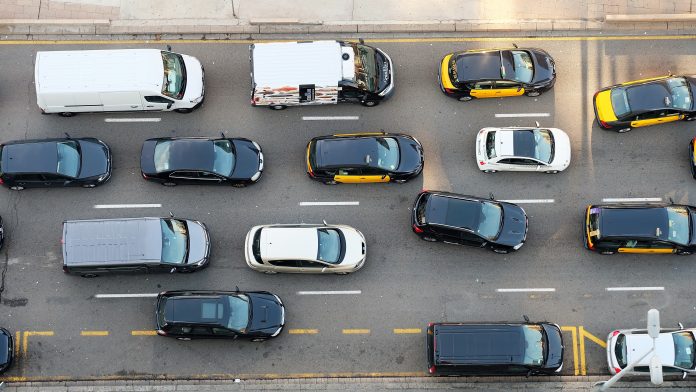David Paja, Senior Vice President and President, Advanced Safety & User Experience at Aptiv, provides his opinion on active safety and how this is paving the way for efficient autonomous mobility
It’s the heart-stopping moment that almost every motorist will be familiar with – a split-second lapse in concentration, an unexpected distraction or straightforward error of judgement while we’re at the wheel. In most cases, it involves nothing worse than a near-miss and a swift and timely reminder to keep our eyes on the road. Occasionally, however, the consequences of letting your mind wander whilst at the wheel can be tragic for both drivers and pedestrians.
There’s no hiding that roads have become more crowded, drivers more distracted and, therefore, people causing more accidents. According to data from the National Highway Traffic Safety Administration (NHTSA), 94% of accidents are directly related to human error. In fact, a staggering 1.25 million deaths annually are caused by vehicles, according to the World Health Organisation (WHO). That means every 30 seconds, someone dies in a car accident.
However, there are many reasons to be optimistic as governments and the automotive industry are looking to drastically reduce these figures. Most recently, the European Parliament has given the green light to new minimum European Union (EU) vehicle safety requirements that will come into force from 2022.
In an effort to make roads safer across the region, the EU’s plans will mean by 2022, new active safety technologies will become mandatory in European vehicles to protect passengers, pedestrians and cyclists. With these plans, the safety performance of cars, light commercial vehicles, buses, trucks and trailers will be vastly improved. It’s hoped that these new safety features will help reduce the number of fatalities and road incidents caused by human error by 90%. This initiative strongly supports the EU’s long-term ‘Vision Zero’ goal which looks to greatly reduce road fatalities and serious injuries by 2050.
What is ‘active safety’?
In short, active safety is the use of technology to create a car that senses risk and either proactively alerts the driver to the potential danger or automatically takes the appropriate corrective action. This is a shift from the past, where the focus was primarily around trying to mitigate the damage caused by an accident. Previously, the automotive industry was concentrated on ‘passive safety’ systems, for example, seatbelts and airbags – where the technology worked to keep passengers protected during a crash. Now, thanks to innovation in technology we can proactively prevent crashes.
Some of the mandatory, active safety feature in the new regulation by the EU include lane -keeping assistance, advanced emergency braking and crash-test improved safety belts. In addition, new technologies will be able to detect driver drowsiness and distraction, for example, the sensors will identify when you are using a smartphone whilst driving, which fundamentally comprises the safety of the vehicle and its passengers.
Making active safety mainstream
In a remarkably short space of time, this active safety philosophy has moved from the design lab to the public road. Today, safety systems such as emergency braking, lane assist and blind spot warning have become increasingly commonplace not just on premium brands, but mainstream models too. The implications of this are truly profound. When it comes to accidents, it’s been calculated that just a half-second improvement in reaction time could prevent 60% of all the road traffic accidents that take place.
Technologies like adaptive cruise control, which adjusts the speed of your car if the car in front of you slows down, lane keeping systems, which alert you if you start to veer out of your lane and emergency braking, which stops your car even if you don’t – can all decrease the severity of crashes or prevent accidents completely.
Creating an active safety system that can be relied on to do exactly the right thing, at the right time, in all potential situations and scenarios, is a truly demanding challenge and one the EU is hoping to set the European automotive industry.
As an example of developments in the industry over the last 20 years, we were the first to put radar on a car in 1999 and integrate a multi-domain controller for Level 3 automated driving systems in 2017 but this has not been an easy journey in the world of advanced driver assistance systems (ADAS).
No matter how well-intentioned, humans will continue to make mistakes. As a result, the EU’s General Safety Regulation will enhance public trust and acceptance of autonomous vehicles to support the transition towards truly autonomous driving. Following compliance with the EU’s new regulations, we hope these mandatory safety requirements will be enforced on a global scale to change perceptions of road safety and ultimately, prevent road accidents to achieve ‘Vision Zero’.
David Paja
Senior Vice President and President
Advanced Safety & User Experience
Aptiv
www.aptiv.com
https://twitter.com/aptiv











